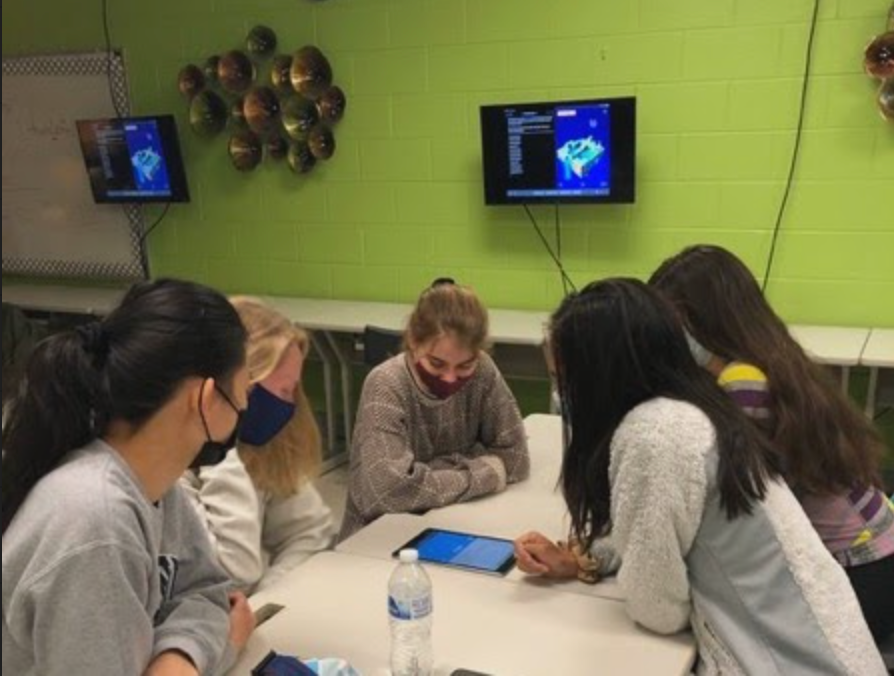BHS chapter of Girls Who Code works to close gender gap in computer sciences
Members of Bearden’s Girls Who Code chapter work on a project at a recent meeting.
When Ms. Amy Shipley noticed that Bearden was seeing a drought in female students taking tech classes, she decided something needed to be done.
The Bearden business teacher started Girls Who Code with 14 founding members a year ago, and the program is going strong again this year.
“Girls Who Code is a place to meet and work with friends who have a common goal,” Ms. Shipley said. “Helping them to build relationships and knowledge in coding.”
Ms. Shipley – with the help of Sarah Yeow (BHS Class of 2021) – started the club last spring when she noticed the number of girls taking coding, web design, and cybersecurity was just 18%.
“Girls Who Code,” though new to Bearden, is a national nonprofit organization started by Reshma Saujani in 2012 and is now used in many high schools throughout the United States to teach girls the fundamentals of coding and how it’s important to our modern world.
“Coding is essentially the language of computers,” outreach officer and Bearden senior Medb Glatt said. “It’s how you tell a computer or a website what you want it to do or how to function.”
According to the Girls Who Code “About Us” page, in 1995, 37% of computer scientists were women. Today, it’s only 24% even with the increase in jobs that use coding, like computer programming, website development, engineering, software development and many others. Girls Who Code as an organization is working to change the statistics.
No experience or even basic knowledge is needed to join. Most of the girls have little to no experience. Ms. Shipley said that the only requirement is a can-do attitude and a willingness to learn.
“My favorite part of GWC is getting to spend time with friends attempting to write a code sequence,” Senior Megan Kleckley said. “Emphasis on ‘attempt’ – there is no prior experience required at all.”
The girls work in groups on development platforms through coding such as Python, Swift, or Scratch to create projects. Every other week, students discuss a female that was a technology pioneer, or who is currently making changes in the world of Tech.
Students will also complete one community and one school service project each year. There is no club fee; however, the girls do design a T-shirt for the school year.
“The club is looked at as a Sisterhood,” Ms. Shipley said. “Last year, I saw a lot of camaraderie amongst the members.”
Students who are interested in being part of Girls Who Code can talk to Ms. Shipley. They meet every Friday morning from 7:50 to 8:25 in Room 313.
